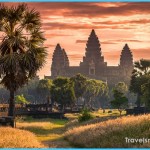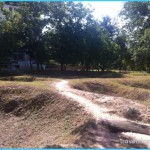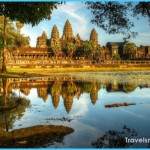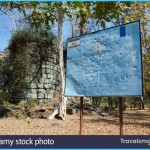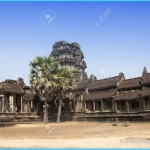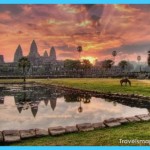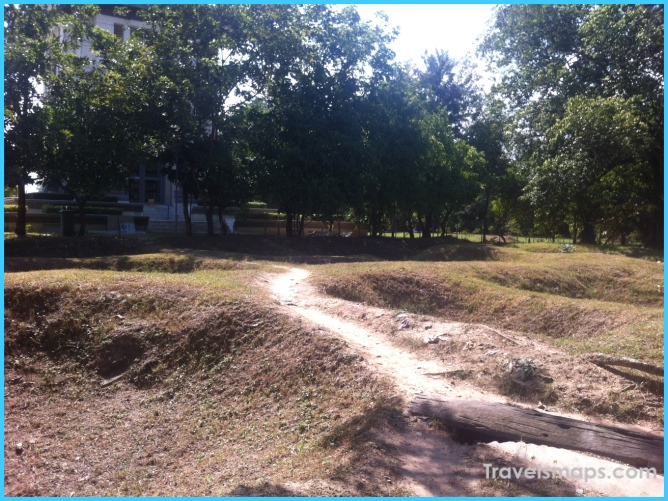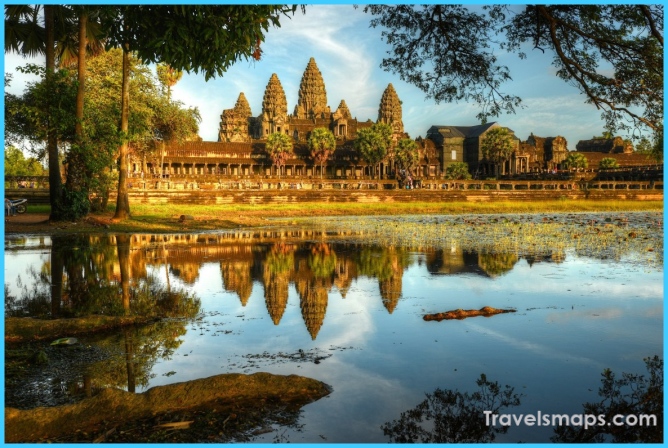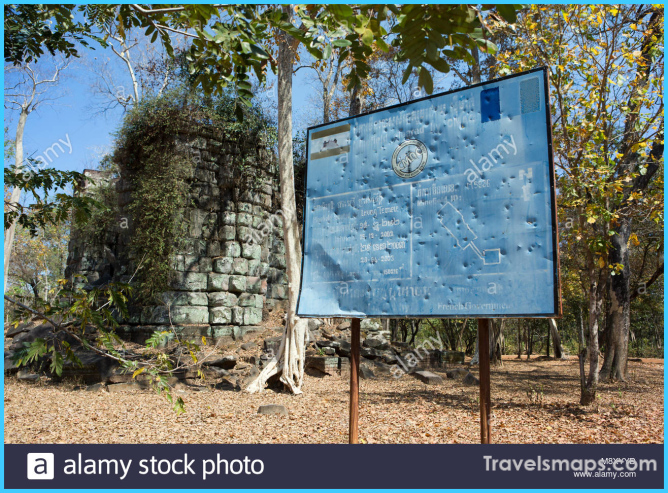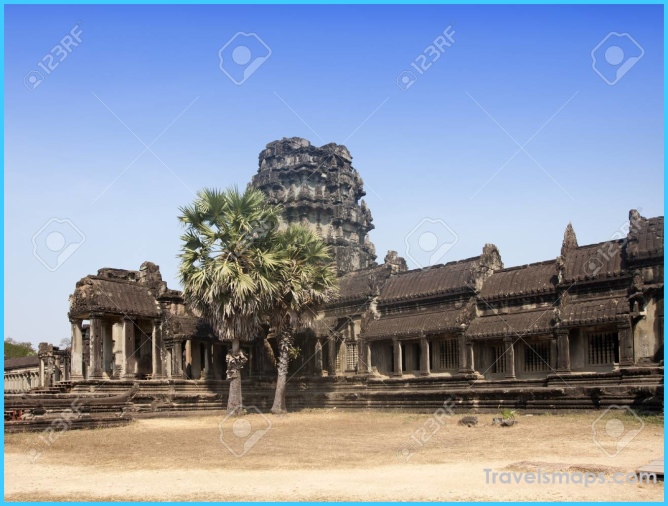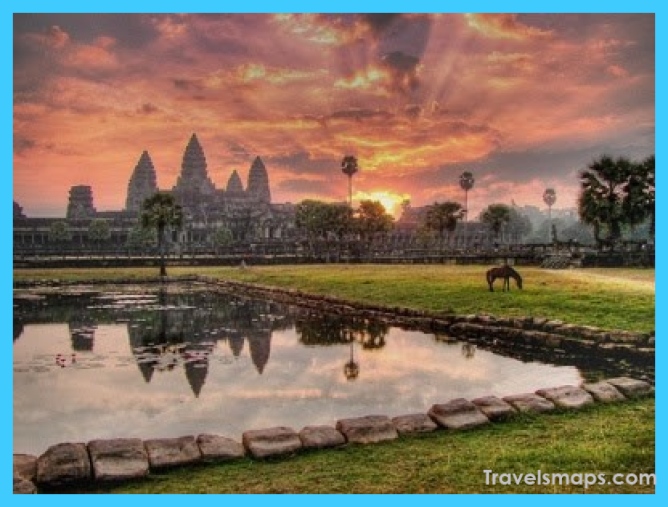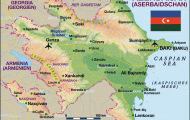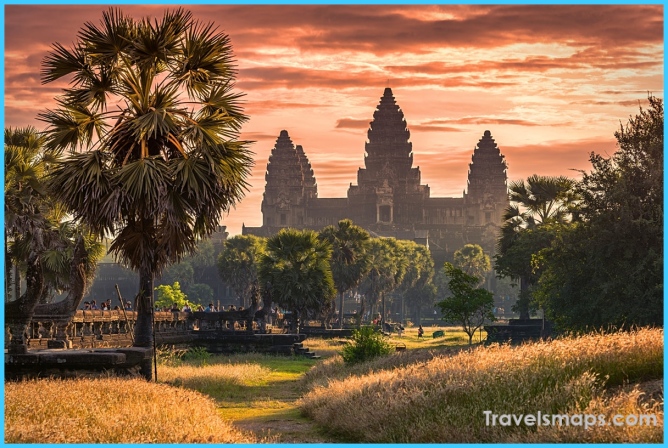
From the day I set foot in Cambodia, I have seen miles and miles of pristine forests. On both sides of the river’s banks, one could see primeval forests with thick canopies, along with rattan vines dangling all over the places, stretching for hundreds of li’s. Once we enter the Tonle Sap Lake
area, we would see vast rice fields stretching as far as the eyes could see. There is not a single tree in those fields.
Large herds of wild oxen (ko prey) gathering in the thousands roaming around the savannah where there are lots of bamboo forests. The bamboos here have thick thorns and their young shoots taste very tart. On the horizon, one could see mountain ranges rising up in all four cardinal points.
Territorial Landscapes of Cambodia Photo Gallery
Natural Resources and Commodities
Cambodia has a lot of mountains and forests. In some places, there are wide, open spaces where elephants and rhinoceroses gather. There are also a lot of valuable birds and wild animals. Among the most sought after birds and commodities are kingfishers, elephant’s tusks, rhino tusks, bee vaxes, aromatic woods, cardamom, lacquers, and orchids.
Kingfishers are a kind of birds which are difficult to catch. They usually live in the forest near a lake or pond in which there are fishes. Trappers who wish to catch them have to hide in tree branches and sit quietly near the edge of water. Then they would put out a kingfisher decoy, set a net trap nearby, and wait for the wild kingfisher to come near in order to set off the trap. Sometimes, the kingfisher trappers sit and wait all day long without catching any game.
As for elephant tusks, only people who live in the rural and isolated villages could find them. Elephant grows only one pair of tusks in a lifetime. So, the belief that elephant sheds its tusks once a year is wrong. Elephant’s tusks, which were taken by hunting, are considered first grade. Those, which are collected following the natural death of an elephant, are considered second grade. The least valuable tusks are those which were found after the elephant died a long time ago.
People collected bee waxes from tree crevices where a kind of small bees with thin waists like fire ants built their hives. Sometimes, people use small boats to search for bee hives in the trees which grow around the edge of the Tonle Sap Lake.
As for rhinoceros tusks, the white ones are considered more valuable than the dark ones. Erica woods grow deep in the jungles. They are rare and difficult to cut down, for they have very hard textures. The outer ring of this tree could be 2 to 3 feet thick. Even the smaller ones have outer rings of at least one foot thick. As for cardamoms, they are grown on the slope of mountains.
Lacquer is a product which was extracted from a particular kind of tree by cutting a hollow hole in its trunk. Once the oily substances oozed out and filled the holes, people would go around collecting them to be processed. There are orchids which grow only on the branches of certain trees. They are very rare. Samraung (Chaulmoogra) oil is extracted from the seeds of the Samraung trees whose fruits look similar to those of the cacao’s. Each Samraung’s fruit contains a number of seeds. Peppers are grown around rattan poles which were used as support structures. The greener the pepper seeds, the more savory they are.
Maybe You Like Them Too
- The Best Places To Visit In North America For Christmas
- Faro Travel Guide: Map of Faro
- Mumbai Travel Guide For Tourists: Map Of Mumbai
- Travel to Budapest
- Thailand Travel Guide for Tourists: The Ultimate Thailand Map

